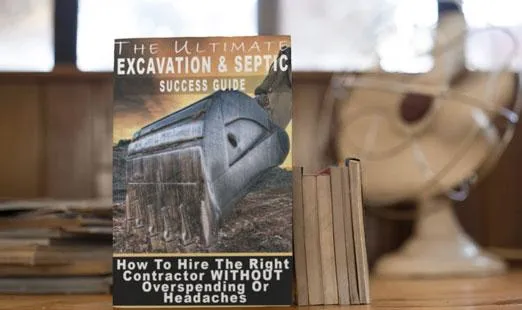YOUR #1 FULL SITE PREP EXPERTS!
CALL NOW- 360-564-5933
Licensed: ROCKRGE816DF - Over 35 Years of Experience | Emergency Services Available | Family and Locally Owned

Beneath the Surface: The Cutting-Edge Science and Technology Transforming Excavation Projects in Washington
The world of excavation has undergone a remarkable transformation in recent years, thanks to rapid advancements in science and technology. In the picturesque state of Washington, where innovation and environmental consciousness are deeply ingrained, excavation contractors are harnessing these tools to revolutionize their industry. From sophisticated imaging techniques to state-of-the-art mapping, let's delve into how modern science and technology are reshaping excavation projects in the Evergreen State.

Unveiling the Subsurface Mysteries
Gone are the days of relying solely on manual labor and intuition when it comes to excavation. Today, excavation contractors are armed with an arsenal of cutting-edge tools that allow them to "see" beneath the surface before even breaking ground. Ground-penetrating radar (GPR) has emerged as a game-changer in this regard. By emitting high-frequency radio waves into the ground and analyzing the reflected signals, contractors can create detailed images of the subsurface, revealing buried objects, utilities, and even geological anomalies.
In Washington, GPR technology has proven invaluable in urban development projects. From Seattle to Spokane, excavation teams are using GPR to locate hidden utility lines, preventing accidental damage during digging. This not only minimizes project delays but also enhances worker safety and reduces disruption to the surrounding community.
Mapping the Future: LiDAR and Geospatial Innovation
The advent of LiDAR (Light Detection and Ranging) technology has added another dimension to the excavation process. By emitting laser pulses and measuring the time it takes for them to bounce back, LiDAR scanners can create detailed three-dimensional maps of the terrain and objects on the surface. In Washington's varied landscapes – from dense forests to mountainous terrains – LiDAR has become an indispensable tool for excavation planning and execution.
In forestry-related projects, such as road construction or land development, LiDAR-equipped drones soar above the treetops, capturing highly accurate elevation data and identifying potential obstacles. This data aids contractors in optimizing their excavation strategies, ensuring minimal environmental impact while efficiently achieving project goals. Moreover, LiDAR's ability to create high-resolution topographic maps assists in predicting soil erosion patterns, further contributing to sustainable excavation practices.
Aerial Insights: Drones in Excavation
Drones, once confined to the realm of hobbyists, have found a significant role in the excavation industry. These unmanned aerial vehicles provide a bird's-eye view of excavation sites, aiding in surveying, monitoring progress, and conducting site assessments. In Washington, where remote and rugged areas are common, drones offer a cost-effective solution to gather data that would have been challenging or time-consuming to collect using traditional methods.
For instance, in the Cascade Mountains, where erosion threatens roads and infrastructure, excavation contractors deploy drones to capture high-resolution imagery of unstable slopes. This imagery guides engineers and geologists in making informed decisions about stabilization measures, ultimately ensuring the safety of travelers and preserving the natural beauty of the region.
Integrating Data for Seamless Project Management
In an era driven by data, excavation contractors are increasingly relying on advanced software to streamline project management and decision-making. Geospatial information systems (GIS) allow contractors to analyze and visualize complex spatial data, enabling them to identify optimal excavation locations, plan efficient routes, and allocate resources effectively.
Imagine a scenario in which an excavation project involves not only digging but also coordinating with multiple stakeholders, managing traffic diversions, and minimizing disruption to nearby businesses. GIS platforms can aggregate and synthesize data from various sources, including LiDAR scans, GPR results, and aerial imagery, providing a comprehensive overview of the project's intricacies. This holistic approach empowers contractors to make well-informed decisions, mitigate risks, and enhance overall project outcomes.
Conclusion
The excavation industry in Washington is experiencing a renaissance, driven by the fusion of science and technology. As excavation contractors continue to embrace ground-penetrating radar, LiDAR, drones, and geospatial data systems, their projects become not only more efficient but also more environmentally conscious. These innovations are not just tools; they are catalysts for transforming excavation from a rudimentary process into a sophisticated blend of art and science. In the Evergreen State, where natural beauty coexists with urban progress, excavation contractors are paving the way for a future where what lies beneath the surface is unveiled with unprecedented precision and care.

AVOID COSTLY MISTAKES:
Do NOT hire an excavating contractor without first reading our free guide:
The ULTIMATE Excavation & Septic "Success Guide."

We Offer Excavation Services You!
If you don't see your specific area contact us and we may still be able to help or give a referral.
All rights reserved | Privacy policy | Client Support Area | Terms & Conditions | Privacy policy






